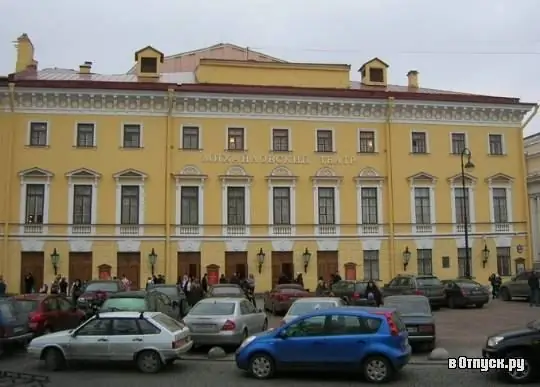
Description of the attraction
The Mikhailovsky Theater is a famous musical theater, a true pearl of St. Petersburg. Here, classic traditions are combined with a spirit of innovation and daring creative pursuits. Opera and ballet performances on the stage of the theater will bring real pleasure to connoisseurs of high art.
The Mikhailovsky Theater was opened in 1833 by decree of Emperor Nicholas I and was one of the privileged imperial theaters. The theater building was designed by Alexander Bryullov, the facades were created according to the sketches of Karl Rossi. The theater owes its name to Grand Duke Michael, the brother of the emperor. Initially, the theater was intended for the imperial family, court and entourage, and even when it was opened to the general public, it retained a high-society atmosphere.
On the stage of Mikhailovsky, French and German troupes alternately gave performances, eminent guest performers performed. Here the operetta "The Gypsy Baron" completed his 30-year St. Petersburg seasons, the king of waltzes Johann Strauss. The great Fyodor Chaliapin sang and staged performances on the stage of the theater.
Since 1918, the Imperial Mikhailovsky Theater was transformed into the State Maly Opera House. Outstanding musicians, opera and ballet artists supported and developed a high theatrical culture within its walls. The theater becomes a “laboratory for the creation of the Soviet opera”. The operas "The Nose" and "Lady Macbeth of the Mtsensk District" by Dmitry Shostakovich were staged on its stage for the first time, the innovative "The Queen of Spades" staged by Vsevolod Meyerhold was released, the world premiere of Sergei Prokofiev's opera "War and Peace" took place here. The ballet troupe was created and headed by the outstanding dancer and choreographer Fyodor Lopukhov, whose successors were later Igor Belsky, Oleg Vinogradov, Nikolai Boyarchikov.
In 2001, the Mikhailovsky Theater regained its historical name, in 2007 - the glory of the most secular musical theater in St. Petersburg. Today the theater, while remaining faithful to the age-old traditions of Russian musical theater, strives to keep its finger on the pulse of the modern world theatrical process.
The theater has a unique repertoire that can be compared to a collection of jewels. Some of the famous classical ballets are performed in versions not presented on any other stage. These are, for example, "Swan Lake" - the so-called "Old Moscow" production, the play by Alexander Gorsky - Asaf Messerer as revised by Mikhail Messerer, Giselle as revised by Nikita Dolgushin, Le Corsaire revised by Konstantin Sergeev, Laurencia as choreographed by Vakhtang Chabukiani, The Flames of Paris, choreography by Vasily Vainonen. A separate chapter in the ballet repertoire is the choreographic compositions of the famous Spanish maestro Nacho Duato. In total, he staged more than 10 ballets at the Mikhailovsky Theater, where he headed the ballet troupe for 3 seasons. Among them are the full-length “Romeo and Juliet”, “Versatility. Forms of Silence and Emptiness ", and captivating versions of Tchaikovsky's ballets" The Sleeping Beauty "and" The Nutcracker ", combining respect for tradition and modernity.
The operatic repertoire provides an interesting cut of the world and Russian musical classics. On the stage of the Mikhailovsky Theater, classical productions of Russian operas, such as The Queen of Spades, and radical versions of contemporary directors, for example, Eugene Onegin directed by Andriy Zholdak - the best opera performance according to the Golden Mask version, coexist. Western classics are represented by the operas "Love Potion", "La Traviata", "Pagliacci", "Country Honor", "Tosca", "La Boheme", "Manon Lescaut", "The Flying Dutchman", "Mermaid" by Dvorak and others.






